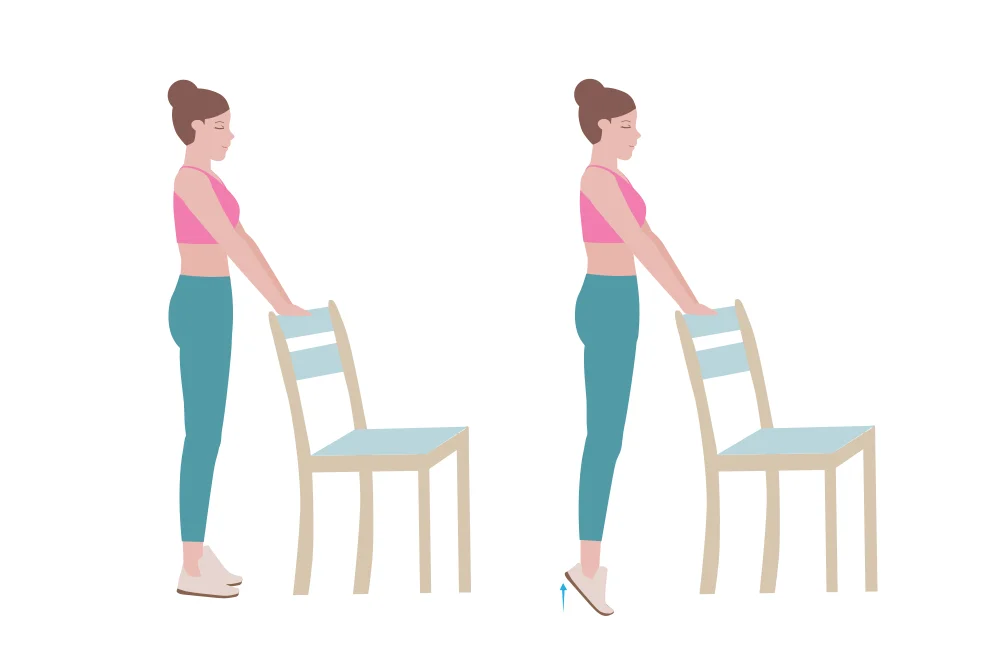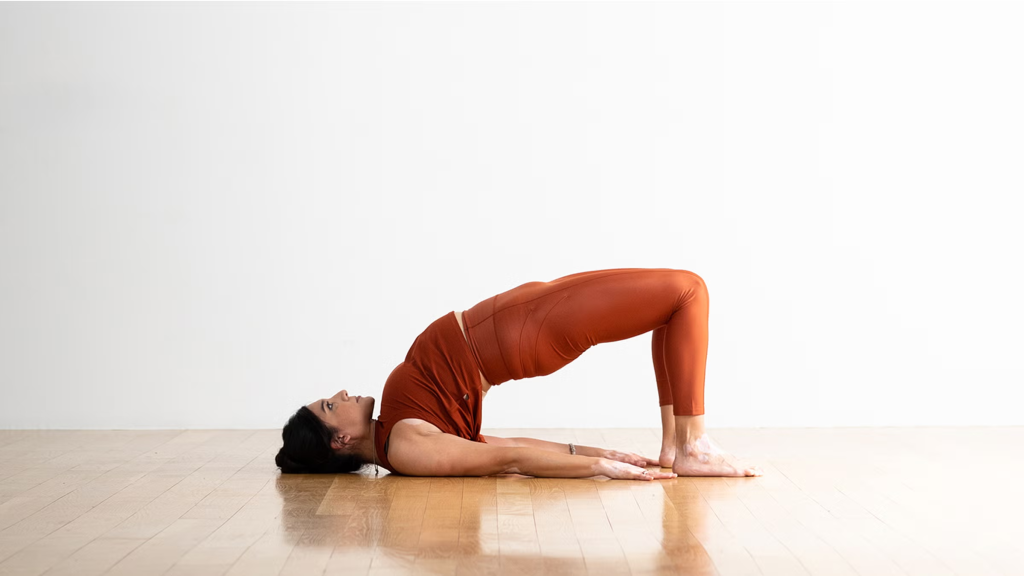Do you know that nearly 1 in 4 adults suffer from chronic knee pain, yet most avoid exercise fearing further damage?
What if the very thing you’re avoiding is the key to your relief?
Knee pain doesn’t mean you have to give up on movement. In fact, the right exercise routine can help you strengthen the muscles around your knee, improve flexibility, and significantly reduce pain—all without causing strain or further injury. Whether it’s due to aging, arthritis, past injuries, or sedentary lifestyle, knee discomfort can be managed and often improved with mindful, low-impact movement.
Let’s explore a safe, science-backed routine tailored for anyone struggling with knee pain, along with essential tips and interesting insights to keep you motivated.

What Can Happen After 30 Days of This Exercise Routine
| Benefit | What You May Notice |
|---|---|
| Reduced Knee Pain | Less daily discomfort, improved tolerance to walking or standing |
| Improved Muscle Strength | Stronger thighs, calves, and hips leading to better knee support |
| Enhanced Flexibility | Easier movement with reduced stiffness, especially after waking up |
| Better Balance & Stability | Fewer instances of wobbling or feeling unstable during movement |
| Increased Confidence | Greater ability to perform daily tasks like climbing stairs or squatting |
| Improved Joint Mobility | Smoother, more comfortable knee movement during exercise and routine activities |
| Less Dependence on Support | Reduced need for knee braces, wraps, or assistive devices (in mild to moderate cases) |
| Higher Energy Levels | Movement boosts circulation and endorphins, reducing fatigue |
| Stronger Mind-Body Connection | Better awareness of posture, alignment, and how your body responds to movement |
| Motivation to Continue | Noticing improvements encourages ongoing activity and self-care |
Understanding the Knee: Why Strength Matters
The knee is the largest joint in the body, a complex structure supported by bones, cartilage, ligaments, and muscles. While cartilage acts as a cushion, muscles like the quadriceps, hamstrings, and calves provide stability and strength.
When these supporting muscles are weak or imbalanced, the knee joint bears more stress—leading to pain, stiffness, or injury. Strengthening these areas ensures better support and offloads pressure from the knee itself.
Myth Buster:
“Exercise will make my knee pain worse.”
This is a common misconception. In reality, controlled, low-impact exercises actually reduce pain and stiffness by boosting blood flow, improving joint lubrication, and reinforcing the muscles that support the knee.
The Golden Rules Before You Start
- Warm up first: Even 5 minutes of light cardio (marching in place or using a stationary bike) helps warm your joints.
- Listen to your body: Mild discomfort is okay, but sharp pain is not.
- Avoid high-impact moves: Skip running, jumping, or deep squats.
- Use support if needed: Knee sleeves or doing exercises near a chair/wall helps maintain balance.
Knee-Friendly Exercise Routine: Strength Without Strain
1. Straight Leg Raises

- Targets: Quadriceps (front thigh)
- How: Lie on your back, one knee bent, other leg straight. Slowly lift the straight leg to the height of the bent knee.
- Reps: 3 sets of 10 on each leg
- Why it helps: Builds strength without bending the knee.
2. Seated Knee Extensions

- Targets: Quads and knee joint mobility
- How: Sit in a chair, straighten one leg and hold for 3-5 seconds, then lower.
- Reps: 3 sets of 10
- Bonus Tip: Add light ankle weights for progression.
3. Hamstring Curls (Standing or Prone)

- Targets: Hamstrings (back of thigh)
- How: Standing behind a chair, bend one knee toward your glutes, pause, then lower.
- Reps: 3 sets of 10
- Variation: Can be done lying on stomach if standing is uncomfortable.
4. Calf Raises

- Targets: Calves and ankle stability
- How: Stand tall, slowly rise onto your toes, then lower down.
- Reps: 3 sets of 10
- Fun Fact: Strong calves improve walking stability and reduce knee joint pressure.
5. Step-Ups (Low Surface)

- Targets: Quads, glutes, calves
- How: Step up on a low platform or step with one foot, bring the other foot up, then step down.
- Reps: 2 sets of 10 each side
- Note: Keep it low to avoid overloading the joint.
6. Wall Slides (Mini Squats)

- Targets: Quads and glutes
- How: Stand with your back against a wall, feet shoulder-width apart. Slide down into a slight bend (not beyond 45 degrees), hold, and return.
- Reps: 2 sets of 8
- Pro Tip: Keep knees aligned with toes to prevent strain.
7. Bridge Pose

- Targets: Glutes, hamstrings, core
- How: Lie on your back, knees bent, feet flat. Lift your hips toward the ceiling, squeeze glutes, then lower.
- Reps: 2 sets of 10
- Why it helps: Strengthens posterior chain, reducing stress on knees.
Post-Exercise Recovery
- Apply a cold compress on the knee if mild soreness appears.
- Stretch gently, especially the hamstrings and quads.
- Hydrate to reduce muscle fatigue.
- Rest adequately between sessions.
Tips to Maximize Results
- Be consistent—2 to 3 times a week is ideal.
- Combine with low-impact cardio (walking, cycling, swimming).
- Practice good posture and core strength alongside.
- Maintain a healthy weight—every extra pound adds up to 4 lbs of pressure on the knees.
Did You Know?
Every step you take puts pressure 2 to 3 times your body weight on your knees!
That’s why strengthening the surrounding muscles is key to long-term knee health.
When to Seek Professional Help
Exercise is beneficial, but if you experience:
- Swelling
- Instability or buckling
- Sharp or worsening pain
→ it’s wise to consult a physical therapist or orthopedic specialist.
Conclusion: Rebuild Without Breaking Down
Knee pain isn’t a life sentence. With the right approach, you can move, strengthen, and heal—without strain. This routine isn’t about pushing limits, but about safeguarding your knees and reclaiming your ability to move with confidence.
Remember: movement is medicine—especially for knees.
Frequently Asked Questions (FAQs)
Can I exercise with knee pain, or should I rest until the pain is gone?
You can and should exercise—as long as it’s low-impact and doesn’t worsen your symptoms. Rest is important during acute inflammation, but prolonged inactivity can lead to stiffness, weakness, and increased pain. The key is choosing the right movements that support your recovery.
How often should I do these exercises?
Ideally, 2 to 3 times a week is a good starting point. Gradually increase frequency as your strength and confidence grow. Always prioritize quality over quantity.
How long will it take to see improvement?
Results vary depending on the cause and severity of your knee pain. Most people notice improved strength and less discomfort within 4 to 6 weeks of consistent, mindful exercise.
Can walking help with knee pain?
Yes—walking is one of the best low-impact exercises for knee health. It promotes joint lubrication, maintains mobility, and supports weight management. Just make sure to wear supportive shoes and walk on flat surfaces.
Do I need special equipment?
No special equipment is required. A chair, yoga mat, or resistance band can enhance your routine, but bodyweight is enough to get started.
Can stretching alone help with knee pain?
Stretching can improve flexibility and reduce tension, but it should be combined with strengthening exercises for long-term relief and joint stability.
Is it normal to feel some discomfort during exercise?
A mild ache or fatigue in the muscles is normal when starting out. However, if you feel sharp pain, swelling, or joint instability, stop immediately and reassess.





